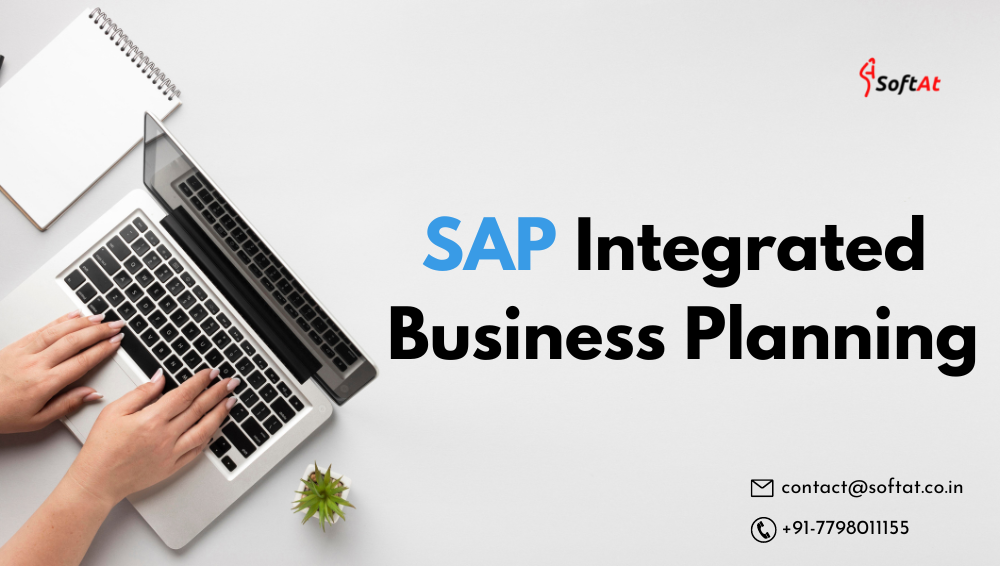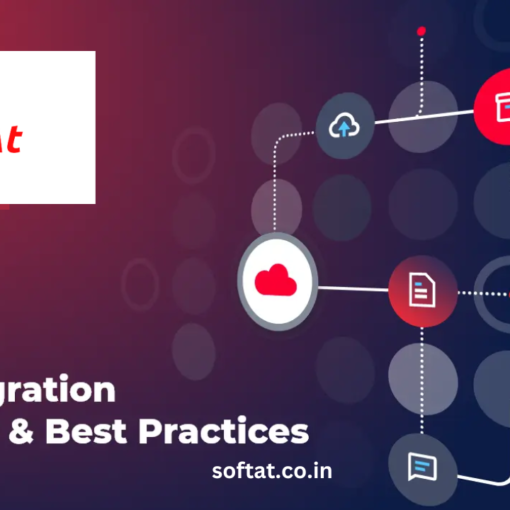What is SAP Integrated Business Planning?
SAP Integrated Business Planning (IBP) Module is a cloud-based system based on SAP HANA for requirements- and stock-planning across the whole Supply Chain. It blends traditional planning and prediction capabilities with current machine-learning heuristics for time series and business object analytics. Allowing you to respond quickly to market changes that threaten your Supply Chain and to meet demand as profitably as feasible.
Executives approve plans at all levels of management to enable such implementation, making it easier to integrate the business’ supply and demand, execution, strategic, and tactical planning.
SAP IBP is an important component of the SAP S/4HANA ecosystem. It was created with the express purpose of assisting various enterprises in managing complex supply chains and streamlining operations at various levels. This system includes a common data model in every module, which aids in providing real-time supply chain visibility. As you may be aware, having a real-time view is quite beneficial when making business decisions.
Multiple users can run different simulations and undertake different analysis scenarios in the planning cycles thanks to SAP IBP’s dedicated integrated planning environment. It also makes it easy to handle any exceptions with alerts. Overall, you can say that SAP IBP management can help accelerate the planning process and decision-making, as it makes use of two interfaces to optimize the user experience: a web interface for planning, and Microsoft Excel for decision-making.
SAP IBP Modules
SAP IBP is an excellent solution to the various challenges encountered in business. Let’s take a look at some of its modules:
SAP IBP S&OP
The heart of integrated business planning is SAP IBP for sales and operations (S&OP). It enables a company’s sales and operations planning to be seamlessly integrated. It usually comprises procedures such as supply and demand analysis, balancing, and integrations. Users may quickly do various studies and integrations, allowing them to see and model various scenarios. It also enables stakeholders to connect their long-term strategic plans with short-term operational planning in order to improve supply, utilization, and timely delivery of goods to customers.
Multiple forecasting models with the ability to stimulate demand, supply, and financial models are among the benefits of SAP IBP for S&OP, as are a comprehensive view of the entire supply network and its customers, manufacturing units, distribution units, and suppliers, as well as easy integration with other solutions.
SAP Integrated Business Planning for Demand
SAP IBP Module for Demand generates a detailed demand plan that may be used to anticipate accurately and efficiently. Its capacity to produce accurate forecasts through demand sensing utilizing modern algorithms is incredibly useful. Fully integrated demand planning reduces inventory costs while increasing service levels.
SAP IBP’s demand benefits include predicting to a degree and working backward to assure timely supply, signaling to confirm orders and adjusting the supply chain accordingly.
SAP Integrated Business Planning for Inventory
Advanced inventory planning for highly complicated supply chains is made easier with SAP IBP Module for inventory. Planners may easily do single-level and multi-level inventory optimizations and scenario analysis. This aids in the establishment of consistent inventory targets at each level of the supply chain.
Improved delivery service and lower working capital are just a few of the advantages of SAP IBP for inventory. Other advantages include using advanced algorithms to effectively balance inventory investment and service levels at each supply chain link and determining where and how much inventory should be made available in different sourcing environments.
SAP Integrated Business Planning for Response and Supply
SAP IBP Module for response and supply enables capacity planning and analysis based on a variety of supply chain limitations. It stimulates and assesses planning scenarios, taking into account procurement, inventory, warehousing, cost of production, and so on.
It evaluates how to optimally allocate finite resources to guarantee a high level of quality service while keeping costs low, taking into consideration demand variability.
SAP IBP Module Control Tower
The supply chain control tower (SCCT) integrates and arranges real-time data from many operations, allowing businesses to effectively detect, assess, and manage their supply chains. SCCT provides end-to-end transparency and real-time visibility into supply chain risks and opportunities. Collaboration and process management also provides a conduit for root-cause analysis.
IBP Control Tower can help users in 3 ways
1. Global Supply Chain Visualization
SAP SCCT uses Analytics and Dashboards to enable end-to-end visibility and control of the supply chain, converting enormous amounts of data into meaningful information for various roles and activities. Furthermore, SAP IBP Control Tower is designed as an overarching analytics solution and a key enabler of Collaboration by integrating IBP planning apps and SAP Business Network, resulting in increased supply chain agility.
2. Exception Management
Alert management with drill-down capability is included in SAP SCCT, bringing the user from insight to action. Alerts that indicate a potential supply chain disruption can be used to provide this advice. Furthermore, the alerts can be based on established KPIs or the company’s own data and conditions.
Companies can create Procedure Playbooks to deal with unforeseen events by incorporating their internal best practices and guidelines for resolving supply chain planning issues. Procedure Playbooks can include a detailed description of the issues, the root cause, and the steps and actions required to restore the supply chain system to normalcy.
3. Navigation and actions
After diagnosing and analyzing the difficulties, the response planner can create a Case Management system to assign, track, and manage the problem, allowing the resolution to be orchestrated easily. Contextual navigation is enabled through SAP systems for forecast analysis, what-if simulation, and exception resolution, allowing visibility and control across the supply chain network.
Key Features and Benefits:
- Comprehensive Planning: SAP IBP offers a wide range of planning functionalities, including demand planning, supply planning, inventory optimization, sales and operations planning (S&OP), and more. It provides a holistic view of the entire supply chain, allowing organizations to optimize their resources, balance supply and demand, and improve overall operational efficiency.
- Real-Time Data and Analytics: With SAP IBP, businesses can leverage real-time data from various sources, such as ERP systems, market trends, and external data feeds. This enables better forecasting accuracy and decision-making based on up-to-date information. The advanced analytics capabilities of SAP IBP allow organizations to perform scenario modeling, predictive analytics, and what-if analysis, empowering them to evaluate multiple planning options and make informed choices.
- Collaboration and Alignment: SAP IBP fosters collaboration and alignment across different departments and stakeholders. It enables cross-functional teams to collaborate in real time, share insights, and work together to develop consensus-based plans. This collaborative approach promotes transparency, reduces silos, and ensures that everyone is working towards common goals, resulting in improved plan accuracy and faster decision-making.
- Supply Chain Visibility and Resilience: SAP IBP provides enhanced visibility into the end-to-end supply chain, enabling organizations to identify potential bottlenecks, risks, and opportunities. By having a clear view of inventory levels, demand patterns, and supplier performance, businesses can proactively address issues, mitigate risks, and optimize their supply chain processes. This helps in building a resilient and agile supply chain, capable of responding effectively to disruptions and market changes.
- Integration with SAP Ecosystem: SAP IBP seamlessly integrates with other SAP solutions, such as SAP ERP, SAP S/4HANA, and SAP Ariba, creating a connected ecosystem. This integration ensures smooth data flow across different systems, eliminates data inconsistencies, and enables end-to-end visibility and control over business processes. Organizations can leverage their existing investments in SAP technologies and easily integrate SAP IBP into their existing landscape.
Conclusion:
In today’s fast-paced and highly competitive business environment, organizations need a robust planning solution that can drive efficiency, agility, and profitability. SAP Integrated Business Planning provides the capabilities needed to achieve these objectives. By leveraging real-time data, advanced analytics, collaboration, and integration, SAP IBP empowers businesses to make accurate forecasts, optimize their supply chain, and make informed decisions. Embracing SAP IBP can unlock the potential for improved operational efficiency, customer satisfaction, and ultimately, business success.





